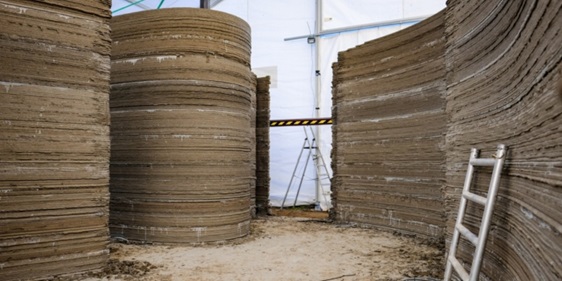The Danish company COBOD International manufactures 3D concrete printers for a rapidly expanding international market.
“From 2015-2017, there was a great deal of hype surrounding concrete printing. There were a lot of sensational headlines in the world press singing the praises of 3D concrete printing. But when architects and others in the industry wanted to use the technology, they found it wasn’t mature at all. Then the interest and enthusiasm cooled a little,” says Henrik Lund-Nielsen.
He is CEO of COBOD International which manufactures 3D concrete printers. In the autumn of 2017, the company, then called 3D Printhuset, were the talk of the town when they started 3D printing the first house in Europe that met Danish and European building standards. The house was situated in the Nordhavn district of Copenhagen. The BOD (building-on-demand), as the house was dubbed, showcased 3D concrete printing technology. It took 50 hours over several months to print the walls for the 50 m2 building. Back then, the world had high expectations for 3D concrete printing, says Henrik Lund-Nielsen, who at the time visited 35 concrete printing projects around the world to gather knowledge about the technology.
Orders pouring in
Fast forward to 2021 and COBOD International is seeing renewed interest in concrete printing. The company’s production of concrete printers doubled in 2020 compared with the previous year. And according to the CEO, in this year’s first two months alone, COBOD already has more orders in the order book than they had in the whole of 2020. All the printers are shipped abroad.
“We are selling to Africa, Asia, the USA, the Middle East, and Europe. We’re shipping the second largest printer so far—22.5 metres long—to Malaysia,” says Henrik Lund-Nielsen.
He explains that the most requested printer measures 10 x 15 metres. Such a printer is located at DTU Ballerup Campus.
While orders are almost pouring in at COBOD, the company is developing the next generation of 3D concrete printers. It has to be capable of more than printing.
“We want to exploit the fact that we have this whole 3D printer set-up. Why only print? Maybe we can use the technology to insulate or paint houses. I think that soon we won’t call it a printer, but rather a multifunctional construction robot,” says Henrik Lund-Nielsen.

Collaboration with DTU
COBOD is collaborating with DTU both in the N3XTCON project (see article on page 10) and with Ballerup Campus.
“We are immensely happy with our collaboration with DTU. Through the N3XTCON project, we gain a lot of new knowledge about concrete as a material and the controllability of the printing process. And through our contact with DTU in Ballerup, we hire many interns who, as part of their BEng programme, spend six months with a company. Many of them we take on as student assistants while they finish their education, and several have gone on to permanent positions within the company,” says Henrik Lund-Nielsen.
COBOD urgently needs this recruitment base says the CEO because he expects to increase the number of employees in 2021 from 42 to about 70 employees to meet the growing demand for the 3D concrete printers.